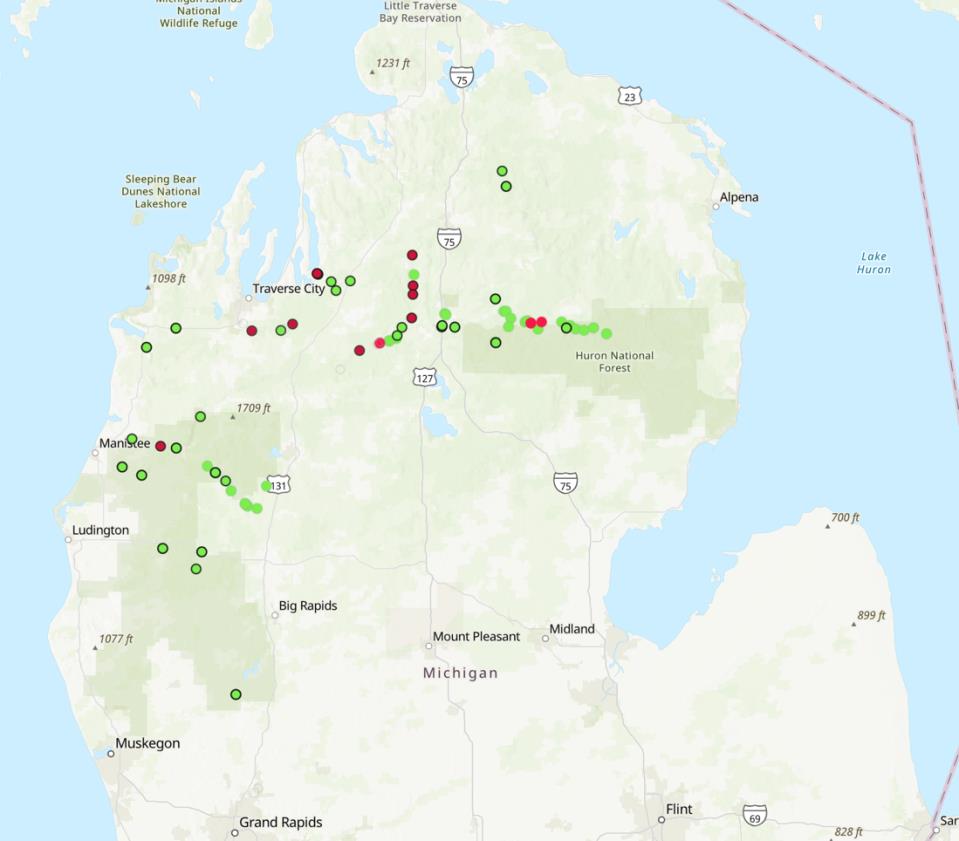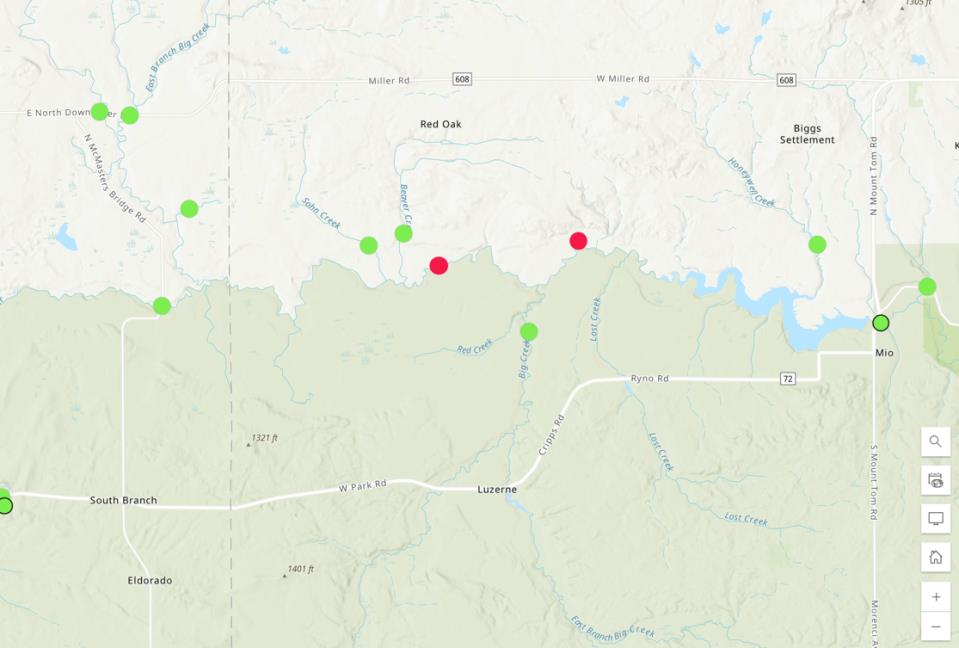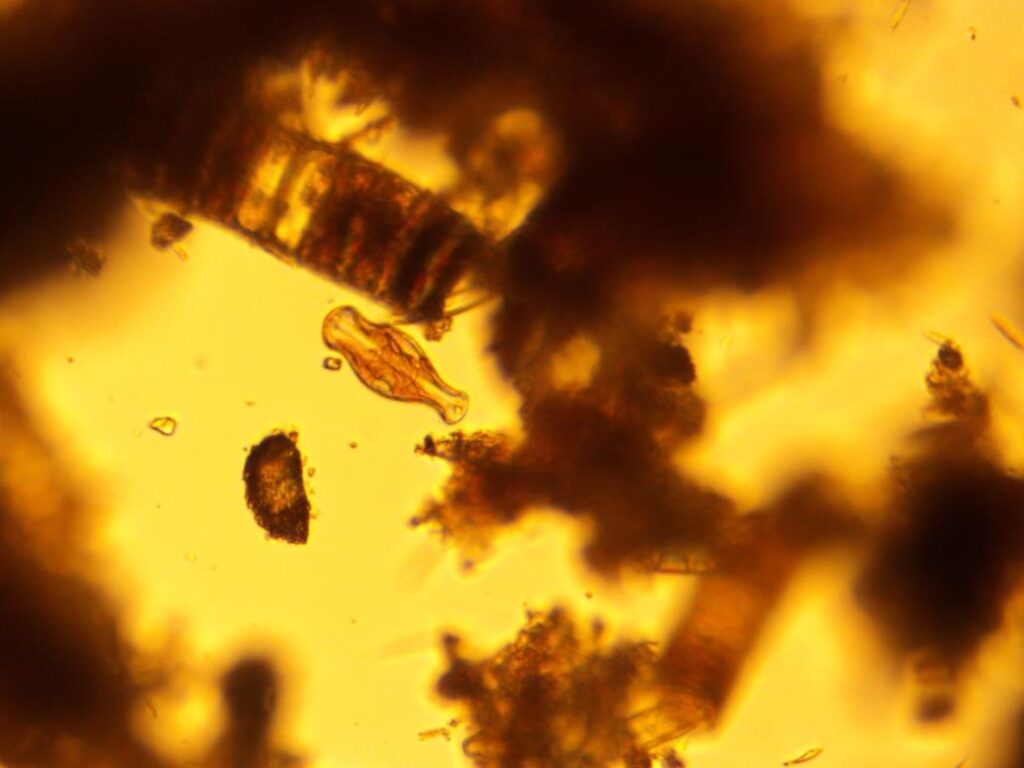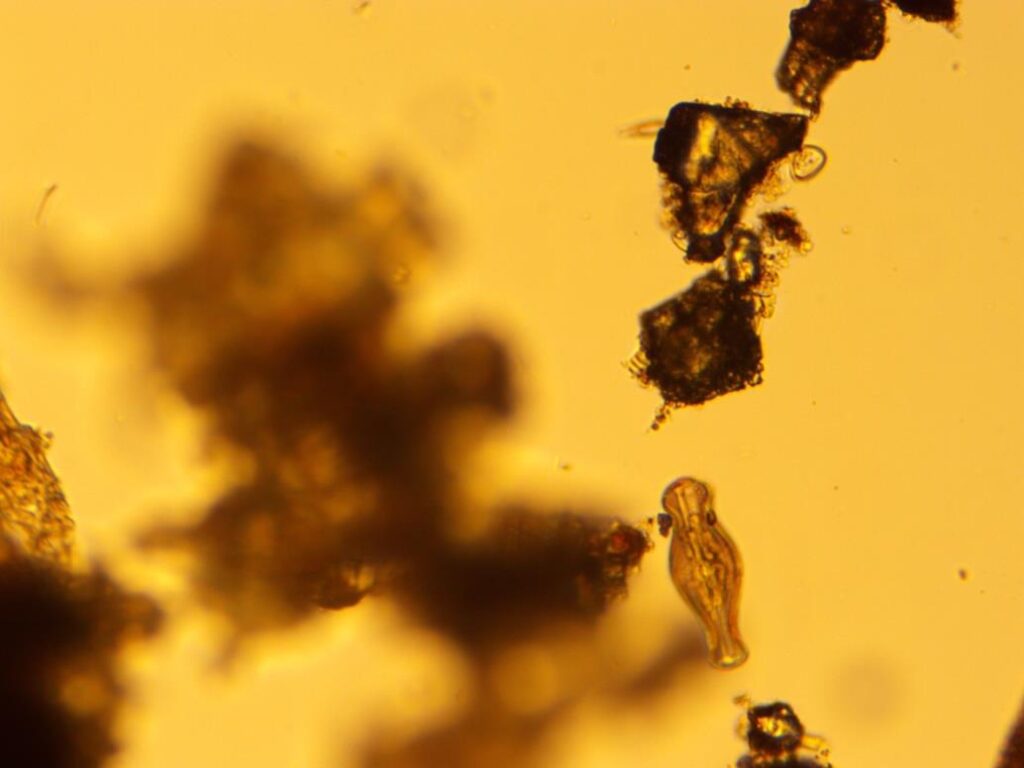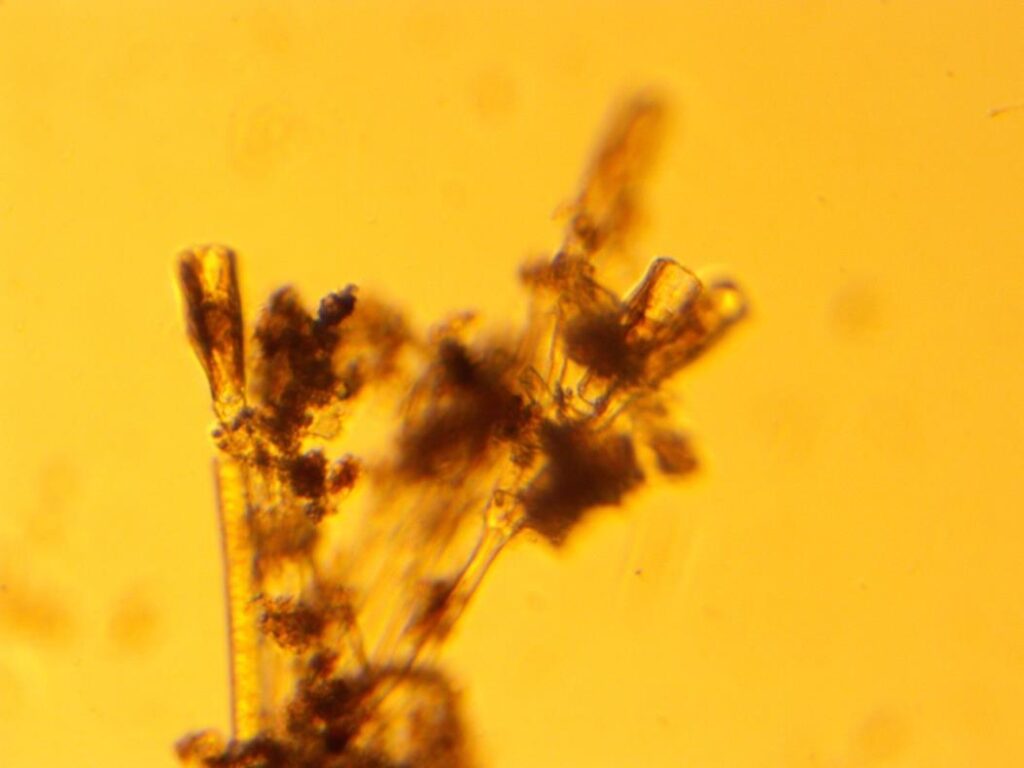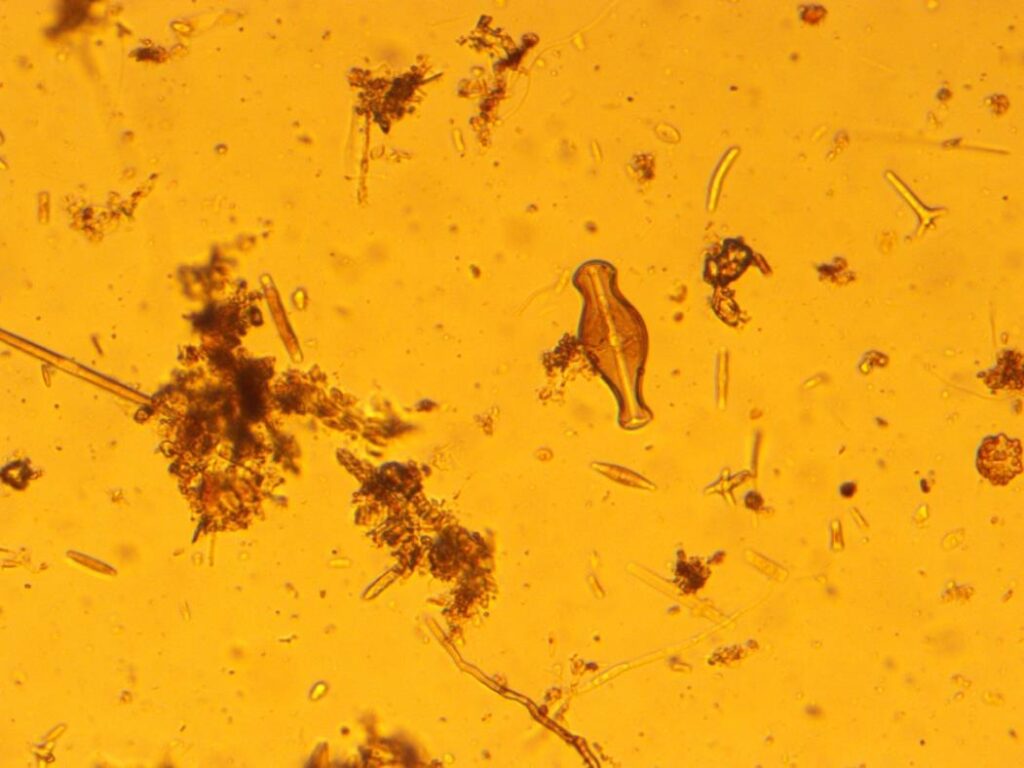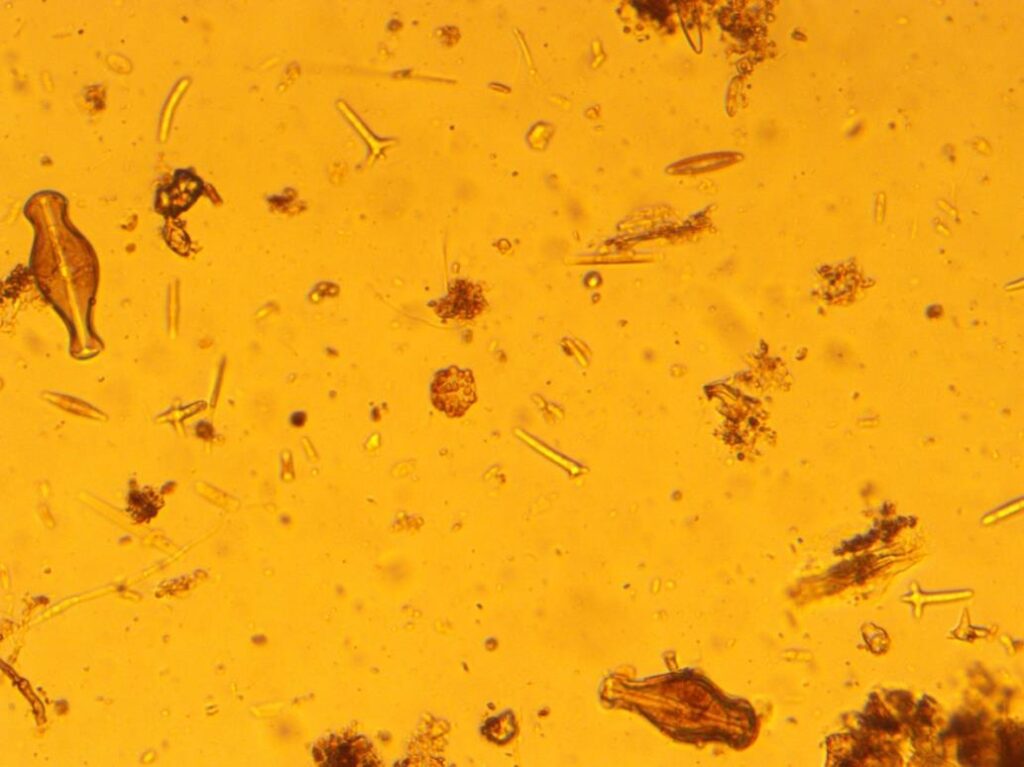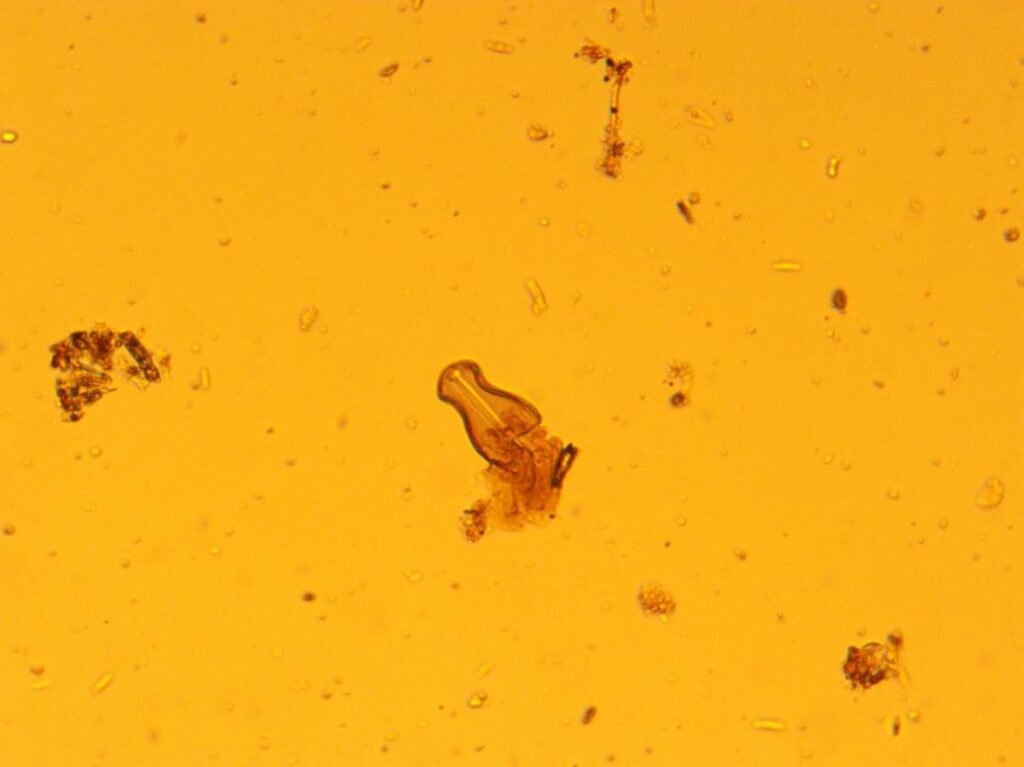30 April 2024
Michigan Trout Unlimited
Dr. Jordyn Stoll
Summary
Michigan Trout Unlimited (TU) began monitoring rivers for didymo presence in August 2023. To date, 32 samples have been collected. Between April 16th and April 29th, 19 samples have been collected and analyzed in the Au Sable watershed (Figure 1). On April 23rd, a benthic algal scrapping was collected at Parmalee Canoe Launch off N Red Oak Rd, north of Luzerne. The sample was collected using a previously unused scrubber (toothbrush), and placed into a sample container unpreserved. Specifically, fist-sized rocks, wood, and macrophytes were sampled. The sample location did not exhibit any obvious signs of didymo growth, with no mats of algae present. On April 28th, the sample was view at 100x magnification. Didymo cells were observed with and without stalks (Figures 2-4). Clean techniques for transferring and viewing samples was used, including using a new pipette for each sample, and cleaning the cavity slide with distilled water and Kimwipes between samples. Distilled water was used as a blank to confirm no contamination with sample container, scrubbing device, pipette and slide. On April 29th, samples were collected at Parmalee at the same location previously sampled, downstream at Whirlpool access off West Cherry Creek Rd, and upstream at McMasters access off McMasters Bridge Rd. Samples were collected using new scrubbers and sample containers, and left unpreserved. The Parmalee sample again contained didymo cells, with no stalks detected (Figures 5-6). Downstream at Whirlpool, a single broken didymo cell was found in the sample (Figure 7). Didymo was not found in the sample from McMasters.
Background
Didymosphenia geminata (Didymo) is a stalk forming benthic diatom that is considered invasive in the state of Michigan. Didymo has been confirmed in the Manistee, Boardman, and St Mary’s Rivers prior to April 2024. Didymo cells are microscopic, yet can produce long polysaccharide stalks that form mats visible to the naked eye. These mats are capable of deteriorating benthic habitat in otherwise pristine rivers. Mats usually only occur under specific environmental conditions, most notably is in oligotrophic, low dissolved reactive phosphorus systems. Michigan TU is working to better understand Didymo distribution and ecology in Michigan by sampling benthic habitats across the state, noting habitat conditions, and determining didymo presence or absence.
Interpretation
Michigan Trout Unlimited collected 19 samples on the Au Sable, three contained didymo, and all three were on the mainstem at public access sites (Parmalee and Whirlpool). While no problematic mats of didymo as currently known of on the Au Sable, didymo is currently existing in the background algae community. If environmental conditions occur that stimulate extensive didymo stalk formation, the Au Sable may see mats of didymo. With the Au Sable’s proximity to the Upper Manistee and didymo there, it is not surprising to have found didymo on the Au Sable. Didymo is easily transported on gear when anglers ‘cross pollinate’ from one river ecosystem to another. There has not previously been an extensive search for didymo on the Au Sable River, didymo has potentially been present but not forming mats and therefore not visible to the naked eye. It is recommended that signage to make visitors aware of didymo’s presence and encourage decontamination should be deployed at all public access locations on the Au Sable. More extensive sampling is needed to determine the spatial and temporal distribution of didymo across Michigan rivers.
Identification Reference
Spaulding, S. (2010). Didymosphenia geminata. In Diatoms of North America. Retrieved April 28, 2024, from https://diatoms.org/species/didymosphenia_geminata
Figure 1: Map of didymo sample locations sites. No samples have been collected outside of the map extent. Red indicates didymo was found, green indicates didymo was not found. Black outline indicates EGLE/DNR sample, points without outline are Michigan TU’s sampling effort since 2023. The lower map is zoomed in on the Au Sable samples containing didymo.

